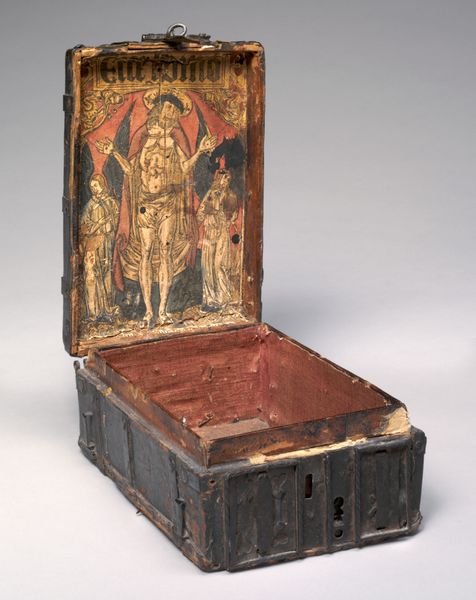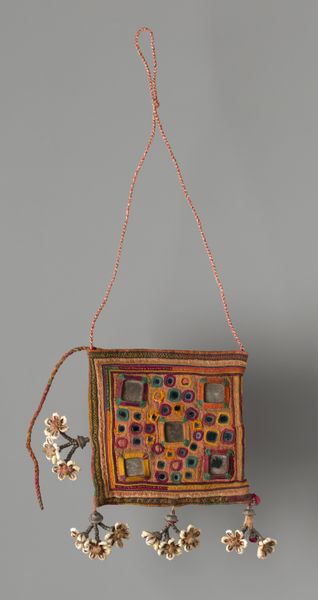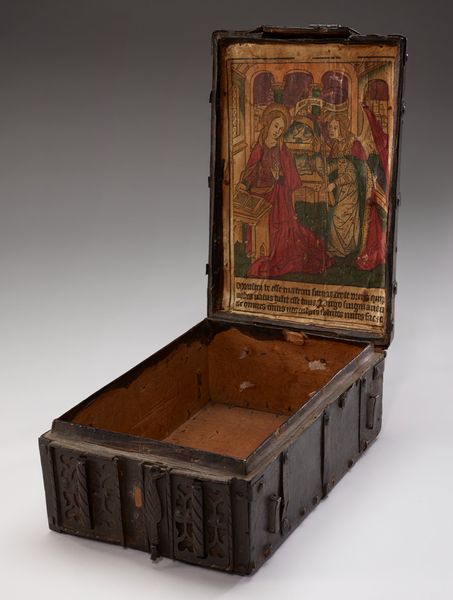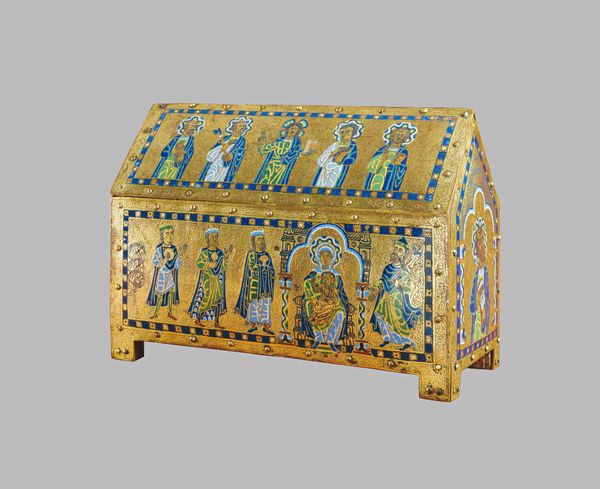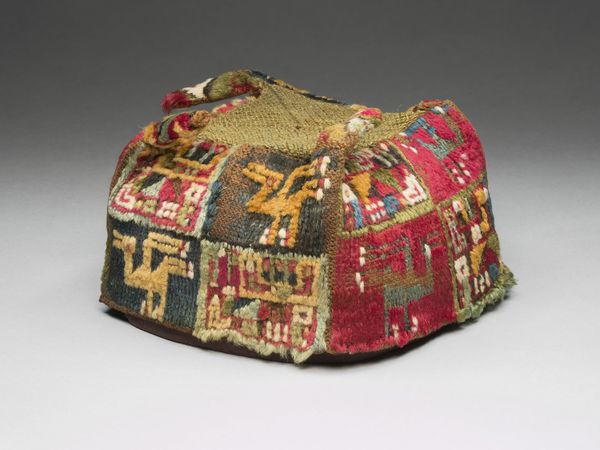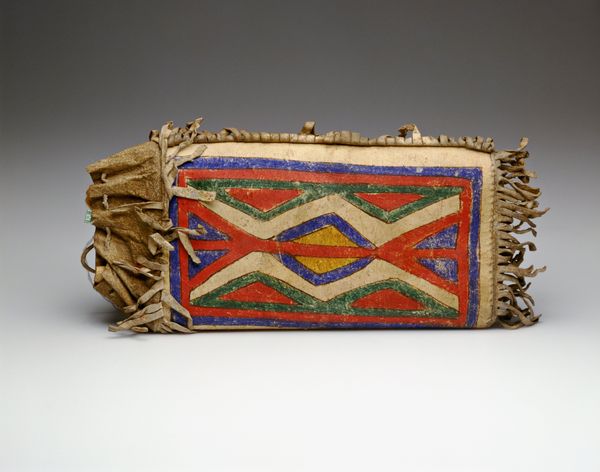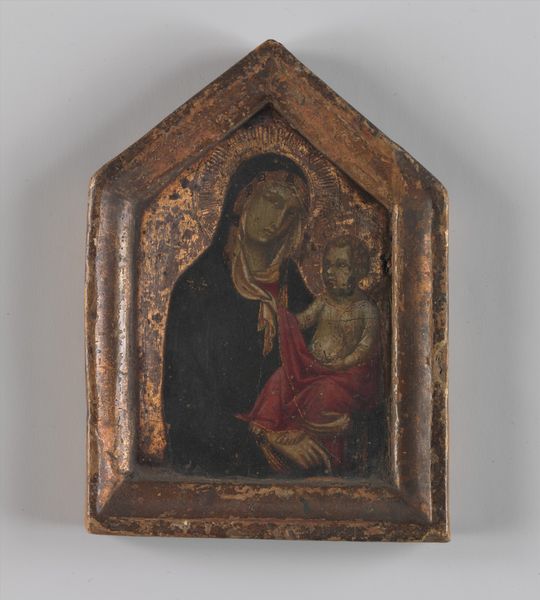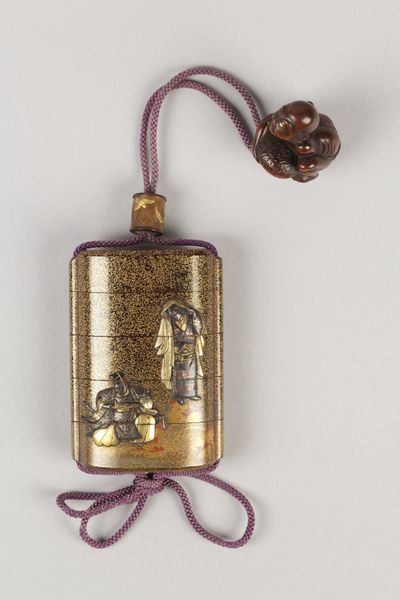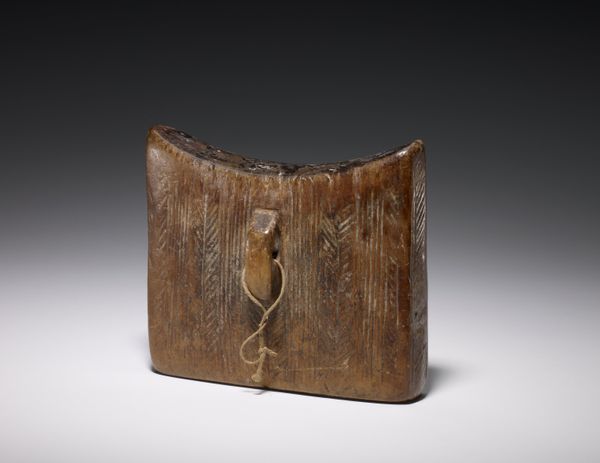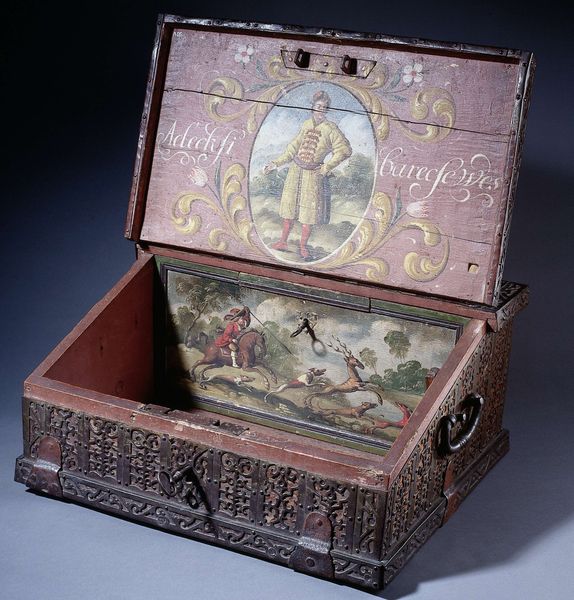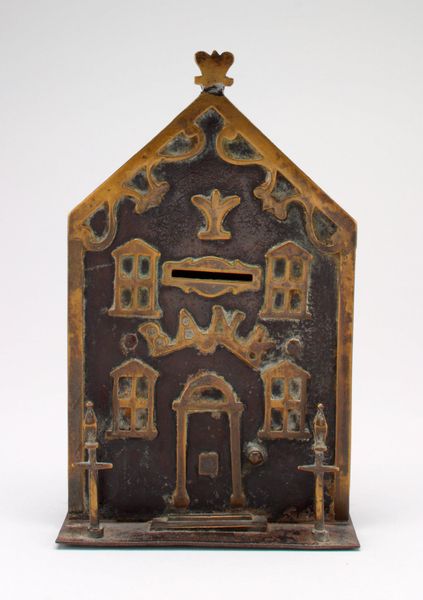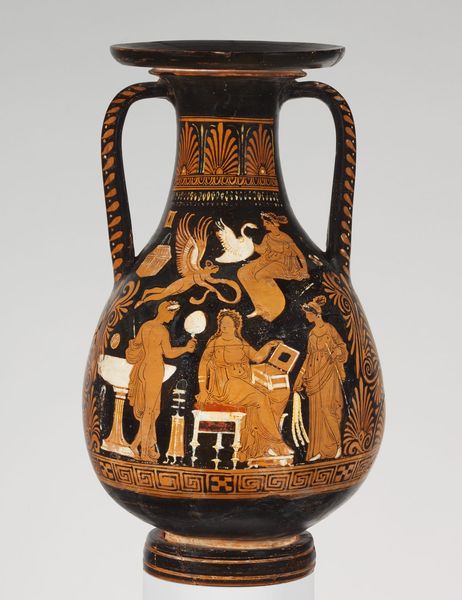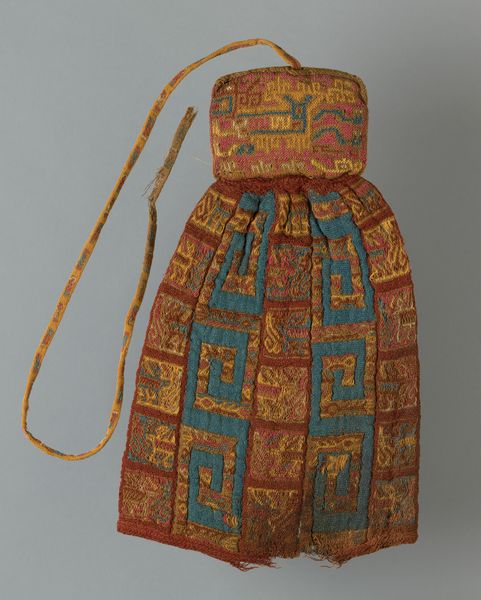
painting, wood
#
portrait
#
african-art
#
medieval
#
painting
#
ceramic
#
wood
#
miniature
Dimensions: 4 7/8 x 3 1/8 x 3/4 in. (12.4 x 7.9 x 1.9 cm) (polyptic, overall, without cord or fabric)
Copyright: Public Domain
Editor: This object is called “Icon polyptych and leather case” from the 18th or 19th century. It’s made from paint, wood, and leather. It gives off an intimate, almost private feeling, like a treasured possession. What stands out to you? Curator: I’m immediately drawn to the construction, the materiality. Look at the polyptych: paint on wood, a common enough practice, but considered within the leather case, we see a conscious combination of art and utility. We should consider what the case does: protect, transport, conceal. Do you think that adds another layer of meaning to the artwork? Editor: I see what you mean! The leather case makes it functional, not just decorative. Was this something meant to be carried, perhaps during travel? Curator: Exactly. And we should consider who had access to this object. Leather suggests expense, skilled craftsmanship. Were these mass produced or the work of one craftsperson? And how would the perception of these figures change based on the social status of the person who owns this work of art? Editor: It does seem like a really personal, precious item. Is the contrast in materials significant, perhaps the rustic leather against the more refined, painted icons? Curator: That contrast speaks volumes. The painted icons signify artistry and devotion, while the raw, practical leather roots the piece in the everyday realities of life and labor. Does it make you question traditional notions of “art” versus “craft?” Editor: Absolutely. The combination blurs those lines. Thinking about it this way makes me appreciate how art is also a product of specific materials and making processes, shaped by social factors and artistic values. Curator: Precisely. The object then reveals cultural information, shedding light on patterns of consumption and class structure. It changes everything when we investigate material and culture!
Comments
minneapolisinstituteofart almost 2 years ago
⋮
From an early age, the kingdom of Axum, precursor of today's Ethiopia, came into contact with Christianity. Around 324 CE King Ezana adopted the new creed as a state religion - thus making Ethiopia one of the first Christian countries in the world. Christian images from various Middle Eastern and Mediterranean artistic traditions were introduced, and many foreign artists worked at the court. Over time, Ethiopian icons developed their own characteristic style. The use of small, portable icons became especially popular in the 18th century. This triptych consists of three panels, two of which are finely carved with crosses on the exterior. The remaining four sides are painted in vivid colors. The two that are visible show standard compositions: Mary holding Christ seated between archangels Michael and Gabriel, and Saint George, who is very popular in Ethiopia, slaying the dragon. An object of personal devotion, such an icon would also be worn around the neck to protect the traveler.
Join the conversation
Join millions of artists and users on Artera today and experience the ultimate creative platform.
